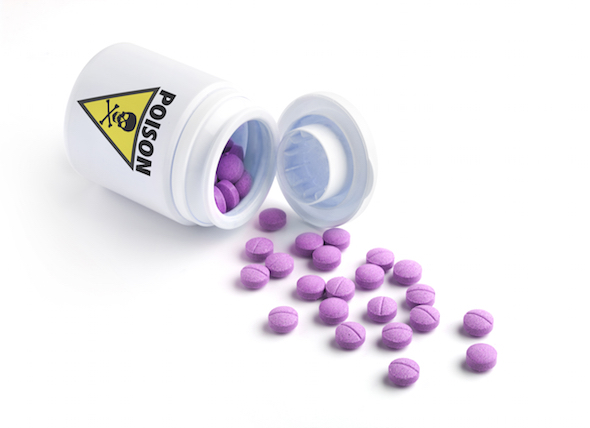

Bromethalin rodenticide toxicity, more commonly referred to as rat poisoning, occurs when a dog becomes exposed to the chemical bromethalin, a toxic substance that is found in a variety of rat and mice poisons. Ingestion of bromethalin can lead to an increased pressure of cerebrospinal fluid (the liquid within the membrane of the skull that the brain essentially floats in) and cerebral edema (the accumulation of excess water in the brain). A variety of neurological-based symptoms can result from this, including muscle tremors, seizures, and impaired movement.
While other species may be affected by the accidental ingestion of rat poison, cats and dogs are most frequently prone to this condition.
Common symptoms of toxicosis in dogs include loss of appetite (anorexia), impaired movement, paralysis of the animal’s hind limbs, slight muscle tremors, generalized seizures, and a depression of the central nervous system. Ingestion of extremely high doses may cause a sudden onset of muscle tremors, and even seizures.
Clinical signs usually develop within two to seven days of bromethalin ingestion; however, it is possible that signs will not develop for up to two weeks following ingestion. If poisoning is mild, with minimal bromethalin ingestion, symptoms may resolve within one to two weeks of onset, although some dogs may continue to show signs for four to six weeks.
Bromethalin rodenticide toxicity occurs with the ingestion of rodenticides containing the chemical bromethalin. Dogs may also be targets of secondary poisoning if they eat rats or mice that have ingested the poison themselves. Toxic doses of bromethalin are estimated to be 2.5 mg/kg for dogs.
If bromethalin toxicosis is suspected, testing will include a urine analysis, and brain imaging with magnetic resonance imaging (MRI), or a computed tomography (CT) scan, which may reveal excess fluid in the brain (known medically as cerebral edema).
Other possible diagnoses that may cause symptoms similar to those of bromethalin toxicosis include neurological syndromes produced by traumatic events (such as a car accident), exposure to other infectious and toxic agents, or a tumor growth.
If bromethalin toxicosis occurs, the dog’s digestive tract needs to be decontaminated as soon as possible. This may initially be done by inducing vomiting, and then administering activated charcoal and an osmotic cathartic (this induces the dog’s bowels to empty). This should be done every four to eight hours for at least two to three days following poisoning, or as prescribed by your veterinarian. Some medications are available which may be used to control symptoms such as muscle tremors and seizures.
Bromethalin toxicosis can cause prolonged appetite loss (anorexia); therefore, some dogs will require feeding supplements for a time after initial treatment. It may take several weeks to recover from mild poisoning, and symptoms should be monitored accordingly to avoid further complications.
To prevent bromethalin toxicosis, ensure that your dog does not have access to rodent poisons. If you choose to use rat poison in your home with dogs, you will want to stay watchful for dead rodents so that you can properly dispose of them before your dog can get to them.
 Acute Vomiting in Dogs
Sudden Onset of Vomiting in Dogs
It is not
Acute Vomiting in Dogs
Sudden Onset of Vomiting in Dogs
It is not
 Unintentional Eye Movement in Dogs
Nystagmus in Dogs
Nystagmus is a condition
Unintentional Eye Movement in Dogs
Nystagmus in Dogs
Nystagmus is a condition
 Vaginal Discharge in Dogs
Vaginal discharge refers to any substance coming
Vaginal Discharge in Dogs
Vaginal discharge refers to any substance coming
 Blood in the Urine in Dogs
Hematuria in Dogs
Hematuria is a condition which
Blood in the Urine in Dogs
Hematuria in Dogs
Hematuria is a condition which
 Spine Degeneration in Dogs
Spondylosis Deformans in Dogs
Spondylosis deforma
Spine Degeneration in Dogs
Spondylosis Deformans in Dogs
Spondylosis deforma
Copyright © 2005-2016 Pet Information All Rights Reserved
Contact us: www162date@outlook.com